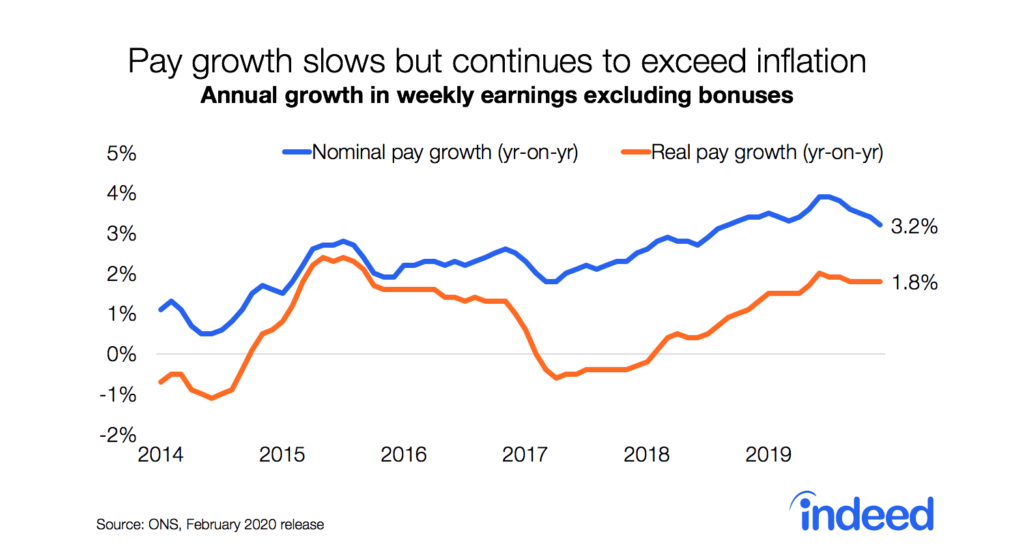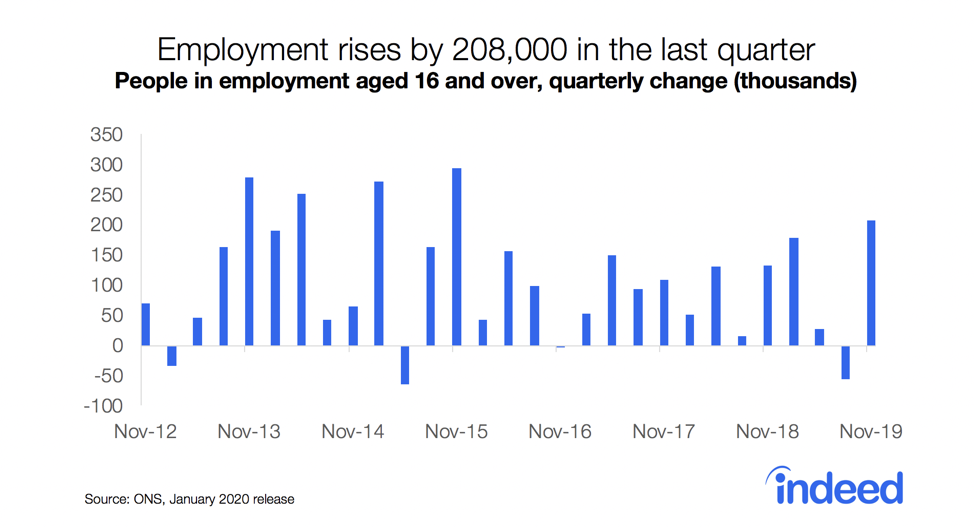We regularly update this report to track the pandemic’s effects on the labour market.
Job postings on Indeed continued to rise in late November and early December, even as the omicron variant took hold across the UK. Job postings — a real-time measure of labour market activity — were 48% above the 1 February 2020, pre-pandemic baseline, seasonally adjusted, as of 3 December 2021.
Strong demand for staff showed little sign of easing in the run up to the Christmas season, at least before ‘Plan B’ restrictions were announced in England, where new curbs include working from home, face masks in more places, and Covid passports in night clubs and large events. Low, middle and high-paid job categories all showed steady growth. The slight dip in new job postings (those that have been on Indeed for 7 days or less) is within the normal range of fluctuations. For now, the inflow of new jobs remains well above its pre-pandemic level.
Postings in most occupations remain high
Veterinary jobs saw the strongest improvement in the fortnight to 3 December, followed by construction. Care, aviation, and loading & stocking saw further improvements, with postings in aviation almost back to their pre-pandemic levels. Postings in high-contact, customer-facing occupations did not yet seem to be impacted by the spread of omicron, with retail (+5pp), food preparation & service (+3pp) and beauty & wellness (+1pp) all registering growth.
Postings fell in just four occupations: chemical engineering, architecture, arts & entertainment, and civil engineering.
What next for the labour market?
A key question for the labour market is to what extent tighter rules or voluntary social distancing reduce demand for certain services, and whether employment will fall as a consequence, especially since no new financial support for businesses or employees has been announced as yet. We will continue to monitor job posting trends as an indicator of labour market health. We host the job posting data on Github as downloadable CSV files and we update them regularly.
Methodology
All figures in this blog post are the percentage change in seasonally-adjusted job postings since 1 February, 2020, using a seven-day trailing average. 1 February, 2020, is our pre-pandemic baseline. We seasonally adjust each series based on historical patterns in 2017, 2018, and 2019. Each series, including the national trend, occupational sectors, and sub-national geographies, is seasonally adjusted separately. We adopted this new methodology in January 2021.
The number of job postings on Indeed.com, whether related to paid or unpaid job solicitations, is not indicative of potential revenue or earnings of Indeed, which comprises a significant percentage of the HR Technology segment of its parent company, Recruit Holdings Co., Ltd. Job posting numbers are provided for information purposes only and should not be viewed as an indicator of performance of Indeed or Recruit. Please refer to the Recruit Holdings investor relations website and regulatory filings in Japan for more detailed information on revenue generation by Recruit’s HR Technology segment.






